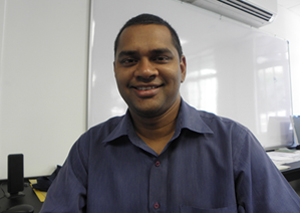
Stanley Simpson
OPINION: SUVA (Pacific Media Watch): The media landscape has changed significantly since 2006 – for better or for worse depending on who you speak to, and who is making the observation.
The first major change of course – is that we are not free – or as free as we were prior to 2006.
Censorship still exists – as stipulated under the Public Emergency Decree – and there is the Media Industry Development Decree – which while aiming to improve the standards of journalism in Fiji, also has "teeth" in that severe fines can be imposed on journalists or media organisations should they breach elements of the decree.
The censorship is not an as stringent as it was after April 2009 when it was first enforced, but it still remains and we, like other media organisations - still get calls from the Ministry of Information asking us to remove a story from our bulletin or from our website.
So the Fiji media today is not just being read, heard or viewed by the public – it is closely monitored, and I think to a great extent analysed.
We are analysed by the Ministry of Information through their media monitors, by the anonymous blog-sites, by the public at large, and by overseas media which sometimes label us either pro-government or anti-government.
In the large – journalists today are not as confident (or as aggressive as some would describe it) as their counterparts were prior to 2006, and in the 80s and 90s. I am not saying here that current journalists lack courage – in fact it is a courageous thing to be a journalist at this time. However given the PER, we are constantly checking ourselves and asking ourselves if the stories we write will breach the PER and what the consequences may be.
Longest censorship
This is the longest period of censorship and public emergency regulations the country has experienced. Over two years and counting.
How the Fiji media and journalists survive and adapt to the current environment is critical. Also important is how we adapt or react once the censorship and public emergency regulations is lifted.
Will the confidence return? What have we learnt? How aggressive will we be in getting a story? How freely will we report, and how responsible will we be?
There is also I believe a current crisis in the Fiji media – in the lack of quality journalists entering the mainstream media industry. Many of our quality journalists are exiting the industry – looking for better pay, better working conditions, or just a more secure and less stressful occupation. Our journalists have endured much from all sections of society – all clamouring for their space or their voice to be heard and to dominate discourse.
It is a pressure environment – all eyes on you – while you try to write and report pieces of the important developments in the nation.
Broadcast journalists for instance are a rare breed today. Very few journalists have radio or television experience. The pool is small to draw from – that if one leaves they are very difficult to replace.
Vernacular journalists – people who can translate a story and write and read fluently in i-Taukei and Hindi are also rare. It is a special skill translating a court story for instance with all its jargon into vernacular. We are losing or will soon lose people like Masimeke Latianara and Rajendra James (FBC News journalists who are now in their 70s and 60s in age – but still reporting) veterans of vernacular journalism – and are finding it difficult to find capable people to replace them.
Still some positives
So there are challenges – and there are things that need to definitely improve. But we must not forget the positives. The media still lives – struggling but it remains alive. Our journalists remain determined to do their work and maintain the integrity of their profession.
The media still continues to make a positive change in peoples lives. There is too much media bashing about all the negative messages that we allow to come through – but there are many examples every day or every week about how a media report has led to positive change or highlighted an important issue.
Can we do better? Yes, we can. But government, the Ministry of Information, civil society and other stakeholders can also do better.
There is some acceptance in media circles that we are living through a time when perhaps helping the country recover and get back on its feet – or back towards democratic elections is more important than breaking stories.
However while we believe in putting Fiji first – this also means telling the truth or reporting freely and responsibly about what is happening. We can focus on development and progress – however we cannot ignore real problems and challenges on the ground – the problems and challenges that all countries face.
The media was not trained to be spoon-fed information. Good journalists investigate their own stories, verify their information, and give both sides of the story.
Stanley Simpson is news director of the Fiji Broadcasting Corporation. This paper was presented at a conference on peace journalism organised by the Citizens Constitutional Forum (CCF) in Suva late last week.



